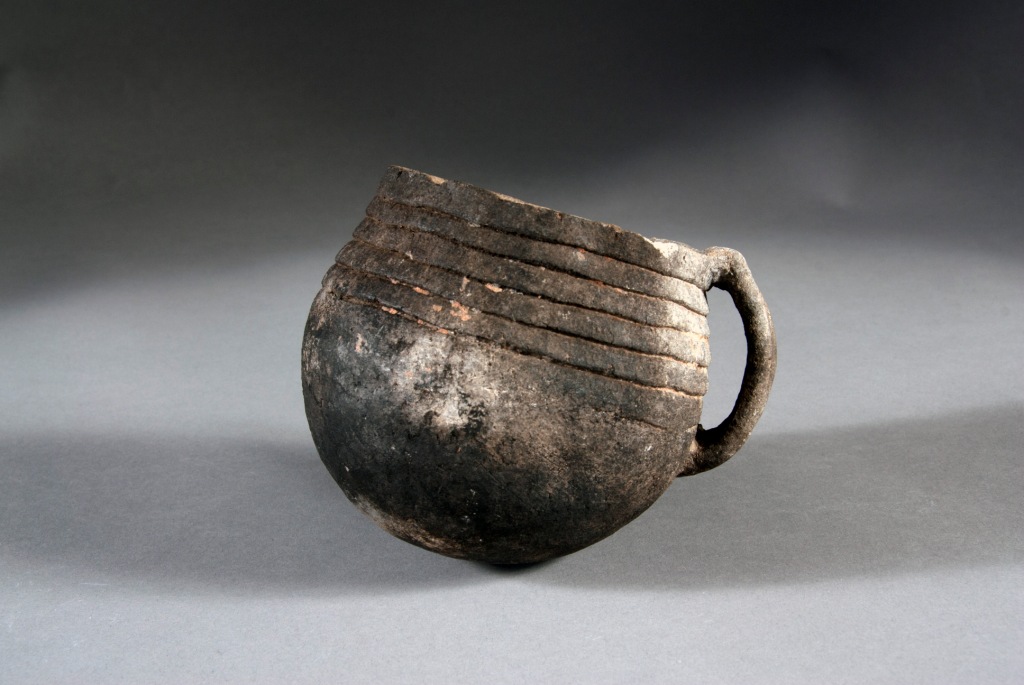Kana’a Gray is a type of Tusayan Gray Ware found in Arizona north of the Mogollon Rim and in northwestern New Mexico.
Archaeological Culture: Ancestral Puebloan, Kayenta
Date Range: Kayenta Heartland: A.D. 865-1050 (Christenson 1994), Flagstaff Area: A.D. 825-1025 (per Christian Downum, Northern Arizona University).
Construction: By coiling.
Firing: In a reducing atmosphere.
Core Color: Light gray to dark gray.
Carbon Streak: Common.
Temper: Abundant medium-fine to coarse quartz sand; temper conspicuous on both surfaces.
Surface Finish: Very roughly finished; scraped and occasionally lightly smoothed in spots; never polished; coils unobliterated but flattened on exterior surfaces of necks from rim to shoulder; coils usually fairly wide; sometimes scraping marks very conspicuous.
Surface Color: Normally gray.
Forms: Jars, mugs.
Vessel Thickness: 2.5 to 9.7 mm; average thickness 4.9 mm (jar walls).
Decoration: No painted decoration; fairly wide flattened, unobliterated coils; neck-banding.
Comparisons: Lino Gray coils are always obliterated over the entire vessel surface; body and sherds are indistinguishable. Kiet Siel Gray has less well-smoothed surfaces (usually bumpy), coils that are sometimes not quite obliterated, thicker vessel walls, and out-flaring rims.
Other Names: Slab House Corrugated, Pre-Pueblo Pottery, Banded Neck Culinary, Plain Gray Coil-Neck.
Compiled from the following sources:
Christenson, Andrew (1994) A Test of Mean Ceramic Dating Using Well-Dated Kayenta-Anasazi Sites. Kiva 59(3):297-317.
Colton, Harold S., and Lyndon L. Hargrave. (1937) Handbook of Northern Arizona Pottery Wares. Museum of Northern Arizona Bulletin 11, Flagstaff, Arizona.
Compiled by:
April Peters, Northern Arizona University Anthropology Laboratories.

